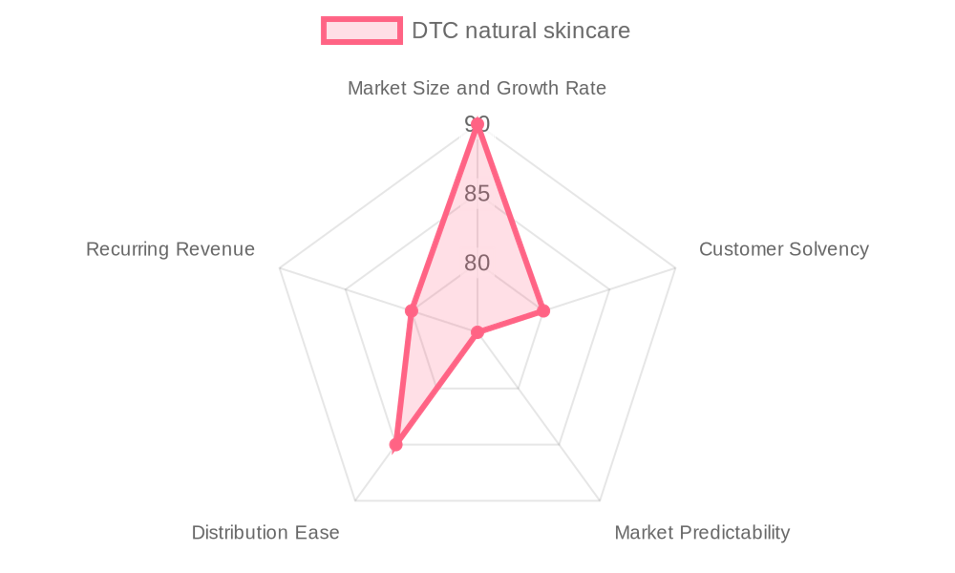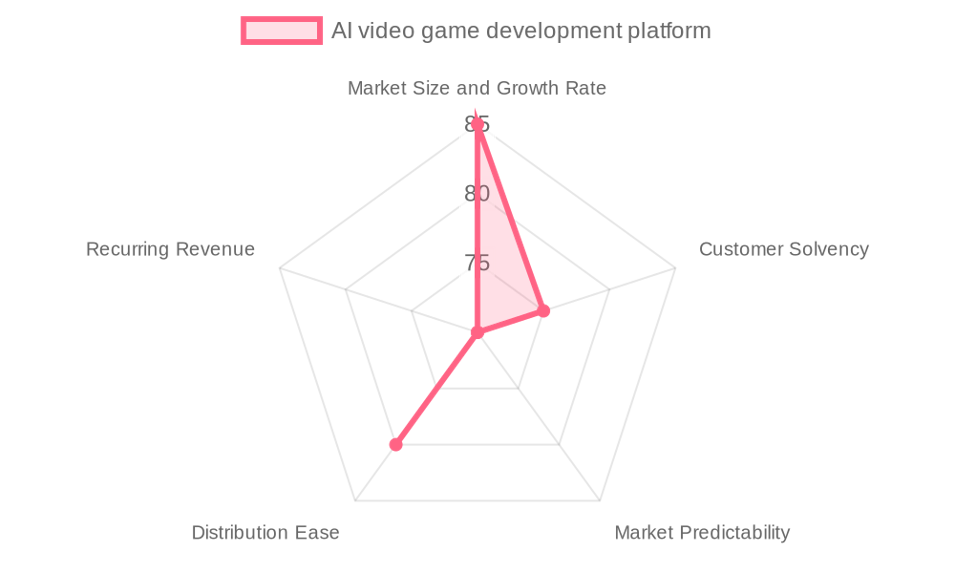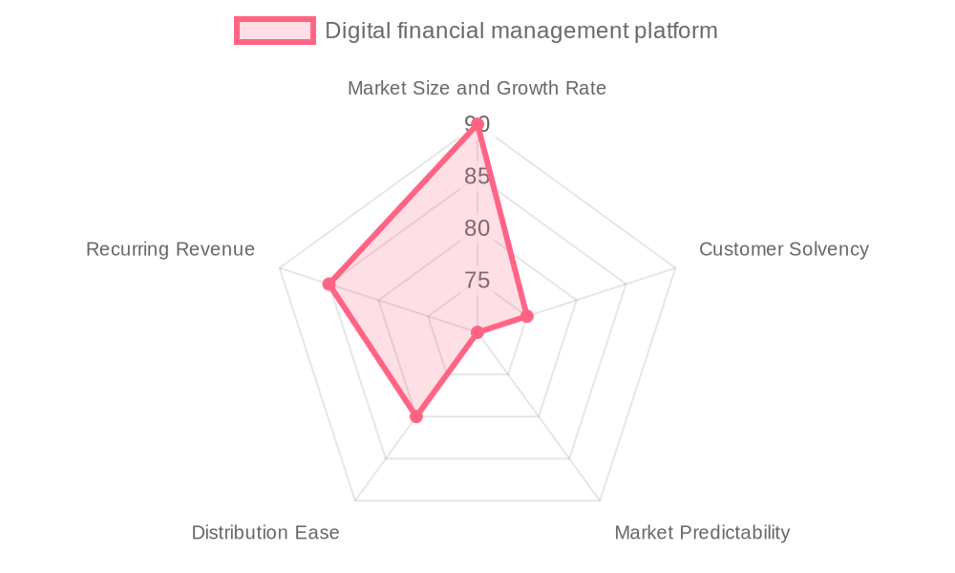The DTC natural skincare market by our Market Intelligence AI agent

Of course. As Proplace's marketing assistant and a strategy consultant expert in the DTC natural skincare sector, I will generate the comprehensive, SEO-optimized blog post based on the provided analysis. The content will exclusively use the data supplied in the JSON files, adhering strictly to the specified structure and tone.
Here is the complete blog post.
\*\*\*
# The Future of Beauty is Direct: An AI-Powered Strategic Analysis of the €13.5 Billion DTC Natural Skincare Market
**Meta Description:** A deep-dive analysis into the DTC natural skincare sector. Explore a €13.5B market size, data-driven GTM strategies, the competitive landscape with key players like L'Oréal and The Ordinary, and the transformative opportunities revealed by AI automation.
**Keywords:** DTC natural skincare, artificial intelligence in beauty, AI market analysis, DTC natural skincare 2025, AI agents for DTC skincare, skincare market trends, personalized skincare, superfood beauty, ethical skincare
## Introduction
The global beauty industry is undergoing a profound transformation, and nowhere is this more evident than in the Direct-to-Consumer (DTC) natural skincare market. Valued at over €180 billion in 2024, the broader skincare industry is witnessing an accelerated pivot towards natural, organic, and ethically-produced goods. This shift is not a fleeting trend but a fundamental realignment of consumer values, driven by a growing awareness of sustainability, ingredient safety, and the desire for proven health benefits. The DTC channel has become the primary engine of this revolution, enabling a new generation of brands to forge direct, meaningful relationships with their customers, bypassing traditional retail gatekeepers.
This analysis, powered by our Market Intelligence AI agent, offers more than just a surface-level overview. It provides a granular, data-driven exploration of the structural dynamics shaping this vibrant sector. We will dissect the **€13.5 billion DTC natural skincare market**, revealing its key segments and growth drivers. We will then outline three distinct, potentially winning **Go-to-Market strategies**, each meticulously tailored to a specific consumer profile. Following this, we will map the **competitive power dynamics**, identifying where value is created and who truly holds the leverage—from ingredient suppliers to dominant brand houses.
Furthermore, we will present a comprehensive **SWOT analysis** that uncovers the market's hidden strengths and critical vulnerabilities. Finally, we will venture into the future, conceptualizing a suite of specialized **AI agents** designed to navigate this complex landscape, optimize the value chain, and unlock unprecedented growth. This is a strategic blueprint for understanding, competing, and leading in one of the most dynamic consumer markets of our time.
## DTC Natural Skincare: A Booming €13.5 Billion Market on a 12% Growth Trajectory
[PLACEHOLDER - YOUR MARKET URL]
The DTC natural skincare market is not merely a niche; it's a formidable economic force. Our analysis sizes the Total Addressable Market (TAM) at approximately **€13.5 billion** in 2024. This figure is derived from an estimated 7.5% share of the total global skincare market, which stands at €180 billion. More impressively, this segment is expanding at a robust **12% year-over-year (YoY)**, signaling sustained and vigorous growth potential. This trajectory is fueled by a convergence of consumer demand for transparency, the rise of e-commerce, and significant innovation in product formulation.
The financial attractiveness of this market is underscored by its key performance indicators. The average Customer Acquisition Cost (CAC) hovers around **$45**, a manageable figure given the high lifetime value of loyal consumers. A strong website conversion rate benchmark of **3.5%** and a Customer Retention Rate of **75%** indicate a market where building trust translates directly into recurring revenue. Furthermore, with a healthy Gross Margin of **65%**, businesses in this space have the financial latitude to reinvest in innovation and marketing.
To truly grasp the opportunity, it is essential to deconstruct the market into its core components. Our analysis identifies three primary segments, each with distinct characteristics, target audiences, and growth dynamics.
### **Segment 1: Premium Organic Facial Care (~45% of TAM)**
Constituting the largest portion of the market, the Premium Organic Facial Care segment is valued at an estimated **€6.075 billion**. It is growing at a formidable 12% YoY, driven by consumers who prioritize certified organic ingredients and tangible anti-aging results. These products are characterized by a high concentration of plant-based bioactives and are positioned as premium, results-oriented solutions.
The target audience is typically urban women and men aged **25-45** with higher disposable incomes. Their purchasing decisions are motivated by a desire to prevent signs of aging and concerns about long-term exposure to synthetic chemicals. This demographic is health-conscious, ethically driven, and values brand transparency and sustainability. Their main pain points include a skepticism of "green-washed" marketing and a need for visible results to justify premium price points. The buying cycle is typically quarterly, focused on replenishment, with brands leveraging email marketing, influencer collaborations, and their owned e-commerce sites to foster loyalty.
### **Segment 2: Sensitive Skin & Special Needs Skincare (~30% of TAM)**
This segment represents a significant **€4.05 billion** market, growing at a steady 10% YoY. It caters to individuals with sensitive, reactive, or allergy-prone skin, as well as vulnerable groups such as pregnant women and parents purchasing for children. The defining characteristics of these products are their hypoallergenic, gentle, and safety-tested formulations.
The consumer here is primarily health and safety-oriented. This includes women aged **20-40** and parents who are diligent researchers. They rely heavily on third-party validation, such as high scores on apps like YUKA, and recommendations from health professionals or trusted parenting blogs. Their key pain point is finding products that won't cause irritation or allergic reactions. The purchase decision is deeply rooted in trust and transparency, with a repeat buying cycle of 6-8 weeks once a safe and effective product is found. The most effective go-to-market channels are brand websites featuring diagnostic tools, specialized online health retailers, and content partnerships with dermatologists and pediatricians.
### **Segment 3: Clean Beauty Superfood-Based Skincare (~25% of TAM)**
The fastest-growing segment, Clean Beauty Superfood-Based Skincare, makes up **€3.375 billion** of the market and is expanding at an impressive **15% YoY**. This segment is defined by its use of innovative, nutrient-rich ingredients like cacao, kale, or acai, which offer potent antioxidant properties. There is a strong emphasis on Fairtrade sourcing, environmental impact, and compelling brand storytelling.
This segment is dominated by Millennials and Gen Z consumers aged **18-35**. They are eco-conscious, trend-driven, and highly active on social media platforms like Instagram and TikTok. This audience values product provenance and seeks multi-functional products that deliver tangible, often immediate, benefits. Their core pain points include a lack of authenticity in an industry rife with superficial claims and a desire for products that align with their ethical values without compromising on performance. The buying cycle can be as frequent as monthly, driven by daily routines and subscription models. Brand storytelling, influencer-generated content, and viral social media campaigns are the most potent channels for reaching this demographic.
Key market trends further reinforce this segmentation. The increasing consumer demand for **transparency and ingredient safety** is a medium-to-long-term driver that favors certified products and raises the bar for all players. Concurrently, the **acceleration of DTC e-commerce** is a short-to-medium-term force that empowers niche brands to scale rapidly, build communities, and reduce their reliance on traditional retail. Technologically, AI-driven skin diagnostics and innovations in sustainable packaging are set to further disrupt the landscape, enabling hyper-personalization and reinforcing the ethical credentials consumers demand.
## 3 Potentially Winning GTM Strategies: Conquering Each Segment of the DTC Natural Skincare Market
A deep understanding of the market segments is only valuable when translated into actionable Go-to-Market (GTM) strategies. A one-size-fits-all approach is destined for failure in a market this nuanced. Our analysis has modeled three distinct playbooks, one for each major segment, designed to resonate with their unique customer profiles, pain points, and buying behaviors.
### \*\*A.
.png)

